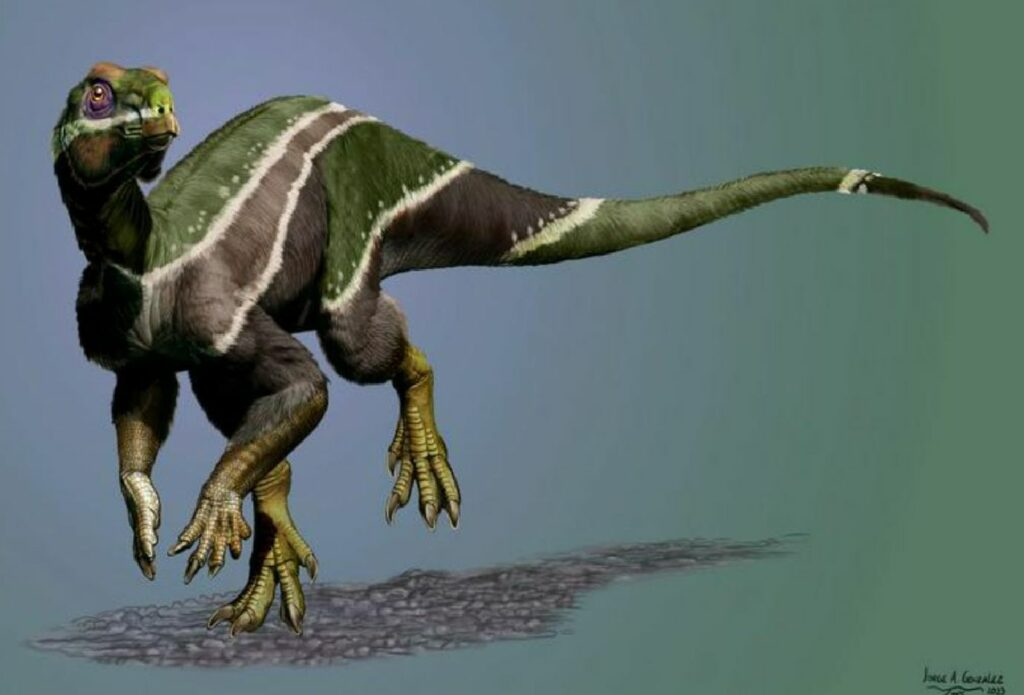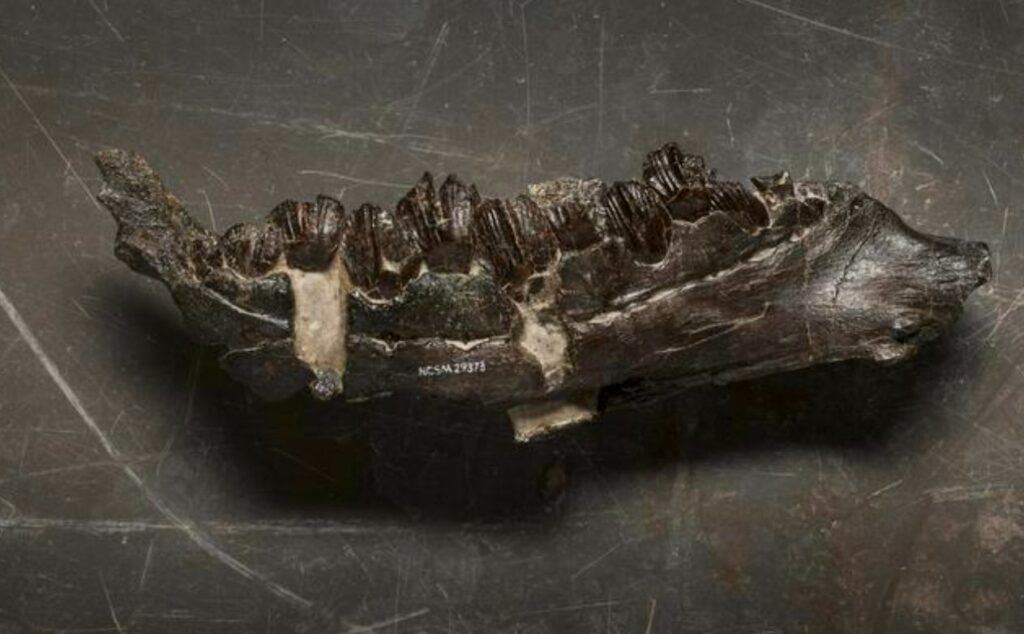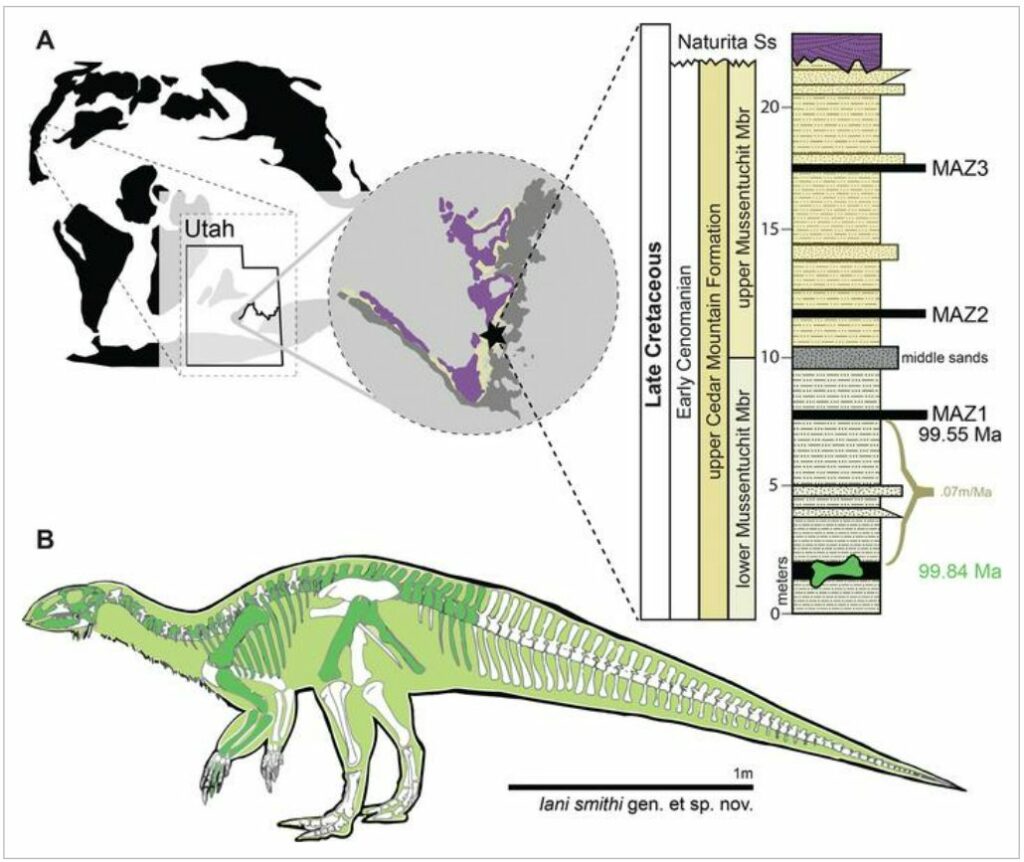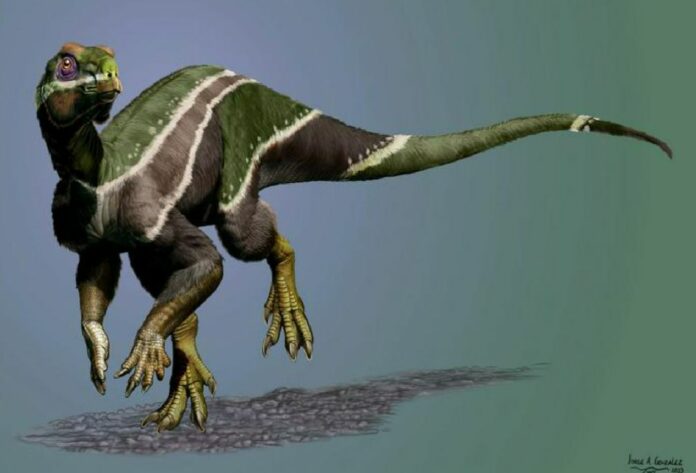The newly discovered Iani smithi, an early ornithopod, stands as a symbol of change, representing the last of an old lineage and the dawn of new dinosaur populations in the mid-Cretaceous period.
The creature, named Iani smithi in honor of Janus, the Roman deity known for dual faces and symbolizing transformation, belonged to the early ornithopod dinosaurs. This group eventually evolved into the more familiar duckbill dinosaurs like Parasaurolophus and Edmontosaurus. A major portion of the young dinosaur’s skeletal structure, including the skull, vertebrae, and limbs, was excavated from the Cedar Mountain Formation in Utah.
About 99 million years ago, during the mid-Cretaceous period, Iani smithi roamed the regions that are today known as Utah. The dinosaur had a unique jaw, robust and equipped with teeth meant for grinding hardy plant substances.
The mid-Cretaceous period was an era of significant transformations, impacting the dinosaur species heavily. Elevated levels of carbon dioxide in the atmosphere heated up the Earth, and a consequent rise in sea levels confined dinosaurs to diminishing land areas. The weather was so warm that polar rainforests flourished. Coastal areas were dominated by blooming plant life, replacing conventional food sources for herbivorous creatures.

In the North American continent, massive herbivorous dinosaurs called sauropods, once considered the rulers of the terrain, were facing extinction, as were their allosaurian foes. Concurrently, smaller herbivores like early duckbills and horned dinosaurs, and feathered predators such as tyrannosaurs and massive oviraptorosaurs, were migrating from Asia.
Thus comes into picture Iani smithi, an entity that’s exceptional not just due to its recent discovery but also due to its scarcity in the North American fossil record and its standing in the chronicle of dinosaur evolution.
“Finding Iani was a streak of luck. We knew something like it lived in this ecosystem because isolated teeth had been collected here and there, but we weren’t expecting to stumble upon such a beautiful skeleton, especially from this time in Earth’s history. Having a nearly complete skull was invaluable for piecing the story together,” adds corresponding author Lindsay Zanno.

Zanno and her colleagues leveraged the excellently maintained skeleton to scrutinize the evolutionary links of Iani. The findings were both astonishing and somewhat hard to believe.
“We recovered Iani as an early rhabdodontomorph, a lineage of ornithopods known almost exclusively from Europe,” Zanno explains. “Recently, paleontologists proposed that another North American dinosaur, Tenontosaurus – which was as common as cattle in the Early Cretaceous – belongs to this group, as well as some Australian critters. If Iani holds up as a rhabdodontomorph, it raises a lot of cool questions.”
A central question is whether Iani could represent a final breath, testifying to the closure of a formerly thriving lineage? Zanno believes that examining this fossil in light of mid-Cretaceous environmental and biodiversity transformations could provide deeper understanding of Earth’s past.

Iani smithi draws its name from Janus, the dual-faced deity known for signifying transitions – a fitting name, considering its historical significance.
“Iani may be the last surviving member of a lineage of dinosaurs that once thrived here in North America but were eventually supplanted by duckbill dinosaurs,” Zanno adds. “Iani was alive during this transition – so this dinosaur really does symbolize a changing planet.
“This dinosaur stood on the precipice,” she adds, “able to look back at the way North American ecosystems were in the past, but close enough to see the future coming like a bullet train. I think we can all relate to that.”
The findings were published today in the journal PLOS ONE.
Image Credit: Jorge Gonzalez | National Geographic, Mark Thiessen and Becky Hale | Zanno et al., 2023
